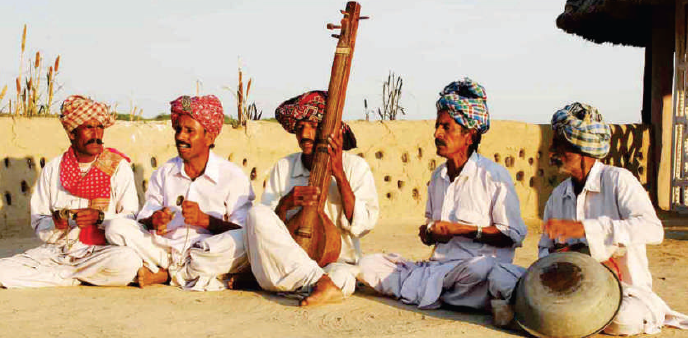Featured
- Get link
- X
- Other Apps
Music is life itself
Music, art concerned with combining vocal or instrumental sounds for beauty of
form or emotional expression, usually according to cultural standards
of rhythm, melody, and, in most Western music, harmony.
Music is a vital part of different moments of human life. It spreads happiness and joy in
a person’s life. Music is the soul of life and gives immense peace to us. In the words
of William Shakespeare, “If music is the food of love, play on, Give me excess of it; that
surfeiting, The appetite may sicken, and so die.” Thus, Music helps us in connecting with
our souls or real self.
Types of Indian Music
Indian music is divided into three main categories:
1. Indian classical music
2. Folk music
3. Modern music
1.Indian Classical Music:
Indian classical music is a solitary pursuit that focuses mainly on melodic
development. In performance, rhythm also plays an important role, giving texture,
sensuality, and a sense of purpose to melody.
Types of Classical Music:
1. Carnatic Music
Carnatic music originates from South India during the Vijayanagar Empire and can
be traced back to as early as the 14 century.
Due to its southern origin, the music shows much less Persian and Asian influence
and more Hindu origins than Hindustani music despite being fairly close.
Carnatic music is also one of the major characters of film music throughout the last
century.
2. Hindustani Music
The Hindustani music is considered the music of the north. The music originated in
the Vedic era with ancient religious hymns sung, usually by the one playing the
music.
3. Light Classical Music
Under the category of Indian classical music, there is also a wide variety of styles that
are fairly similar but milder.
These are known as “semi-classical” Indian music or “light classical” music, such as
Chaiti, Natya Sangeet, Bhajan, Qawwali, Thumri, Kajri, Tappa, Dadra, and Ghazal.
2.Indian Folk Music
Folk music, type of traditional and generally rural music that originally was passed
down through families and other small social groups. Typically, folk music, like folk
literature, lives in oral tradition; it is learned through hearing rather than reading. It
is functional in the sense that it is associated with other activities, and it is primarily
rural in origin.
Types of Folk Music:
1. Lavani
Lavani is one of the music forms that are very popular in Maharashtra state in
western India. Lavani is mainly a combination of dance and songs that are performed
using Dholakis, which is an Indian percussion instrument.
2. Manipuri
Manipuri music descends from the traditions of Manipuri people in the foothills of
the Himalayas and Indian-Burmian borders region. Manipuri music has deep
religious roots and uses the Pena.
The Pena is an ancient musical instrument that is considered a national symbol of
the people of Manipur. It’s made from bamboo rods and the round shell of coconuts
or gourds.
3. Bihu
Bihu refers to the festival of the new year of the Assam state in India. The festival is
accompanied by special upbeat music that uses traditional types of wind
instruments and drums that are a critical part of the celebrations, such as the buffalo
horn Pepa, dhol drums, and gogonas.
4. Sufi Folk Rock
Sufi folk-rock is a relatively modern type of music in India but is slowly becoming a
massive sensation across the country. It combines both elements of traditional
devotional Sufi poetry and rhymes with modern hard rock music.
5. Dandiya music
It is a type of music generally performed in the state of Gujarat.
The modern musical style comes from the traditional musical accompaniment to the
folk dance.
3.Modern music
Indian rock is a genre of popular music that incorporates elements of Indian classical
music and mainstream rock. India itself continued to produce bands in various styles
of rock music, from soft rock and roll and rock pop, to hard rock and metal.
Some Famous Rock Bands are:
1. Avial
From Thiruvanathapuram, Kerala, Avial entered the scene in 2003. Avial classifies
its music as alternative rock with elements of jazz and funk.
2. Agnee
One of the few Indian bands to sign a deal with a major international record
label, Agnee brings together the individual styles of its three members – classic rock,
pop, folk rock, funk, jazz and Carnatic and Hindustani music.
3. Indian Ocean
Indian Ocean originally sprang from a musical friendship. Together, they worked
towards forging a sound reflective of their interest in eastern and western music,
producing Indian folk, jazz and rock.
4.Krosswindz
Krosswindz came together in 1990 in Kolkatta, West Bengal, as a folk rock band,
known for their fusion of Bangla, Assamese and other folk songs.
By Sukanya Solase
- Get link
- X
- Other Apps
Comments
Popular Posts
Why do Artists of Landscape Paintings Prefer Watercolor
- Get link
- X
- Other Apps



Nice..
ReplyDeleteGood information about music
ReplyDeleteWhat a topic u chose! !! Great! !!
ReplyDeleteNice informative blog
ReplyDelete